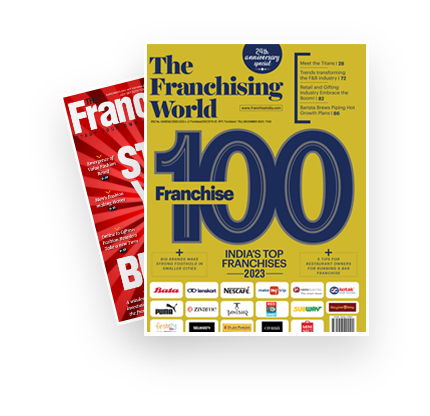
Starting a food truck is one of the easiest ways to break into the food business without sinking all your savings into a restaurant. You get your own kitchen on wheels, so you can take your food wherever hungry people gather—offices, colleges, markets, festivals, private parties, you name it. Firstly, you have to come up with a clear idea for what you’ll serve. Pick food that’s easy to make, consistent every time, and doesn’t cost a fortune to produce. You’ll need a truck that can handle a commercial kitchen, plus all the right licenses—think FSSAI and whatever your local authorities ask for. The up-front cost usually lands somewhere between ₹5 lakh and ₹20 lakh, depending on the vehicle, equipment, and how much you want to invest in branding. If you pick a good menu and stick to the best locations, foot traffic turns into real profits. Over time, you can scale up—add another truck, maybe start delivering, or even branch out with new concepts. With the right mix of food, location, and compliance, food trucks don’t just survive; they thrive.
In this article, we are going to cover the step-by-step approach of how to start a food truck business, including the investment required for it. Read this article till the end to clear all your doubts.
Also read: 15 Most Profitable Food Business Ideas in India
Step-by-step approach of How to Start a Food Truck Business
1. Find your niche and validate demand

Start with a concept that stands out. Maybe it’s artisanal burgers, regional chaats, gourmet sandwiches, healthy bowls, or some wild new dessert fusion. Keep your menu tight—six to ten items is enough. This keeps things simple, cuts down waste, and lets you serve people fast. Before you go all in, test your idea. Run pop-ups or stalls at local events for a couple weekends (budget about ₹5,000–₹20,000). You can also run targeted ads on social media (₹3,000–₹10,000) to see if people bite. Quick surveys with Google Forms and checking out other food trucks nearby also help you gauge demand and competition. Usually, you’ll spend two to six weeks on this validation phase.
Look at the numbers—this isn’t a passing trend. Globally, food trucks are growing from USD 5.42 billion in 2024 to nearly USD 7.87 billion by 2030. In India, the market’s set to jump from USD 165.12 million to USD 280.45 million in the same period. Clearly, people want mobile, flexible food options, and this is a business with real legs.
2. Legal structure and registrations
.png)
Most small food trucks start as a proprietorship with GST; partnerships or private limited structures suit expansion or investment needs.
Essential registrations & licenses:
FSSAI (Food Safety) Registration / License
- For small businesses with turnover below ₹12 lakh per year, only basic FSSAI registration is needed (low fee).
- If turnover is ₹12 lakh to ₹20 crore, apply for a State FSSAI licence, which generally costs ₹2,000–₹5,000 per year.
- For very large businesses, a Central FSSAI licence is required, costing about ₹7,500 per year.
Shop & Establishment / Local municipal trade licence
Required by many municipal corporations; fees vary by city (roughly ₹1,000–₹20,000 depending on local rules).
Vehicle / RTO NOC for conversion
If you convert a commercial vehicle into a kitchen, you’ll need RTO approval/a fitness certificate and possibly an NOC. Fees vary by state and vehicle class.
Fire safety/gas safety compliance
If using LPG/PNG or deep fryers, you may need a fire NOC and a fire extinguisher certificate from the local fire department.
Insurance
Vehicle, public liability and workmen’s compensation: approx. ₹15,000–₹60,000 annually depending on cover.
GST registration
Mandatory if turnover crosses threshold (currently ₹20 lakh for many states; check state-specific rules).
Also read: 7 Low-Investment Food Business Ideas In Sikkim
3. How much capital do you need?
.png)
Startup costs vary widely with whether you buy a new chassis, build a custom body, or lease. Below are typical ranges observed in India:
A. Vehicle & kitchen fit-out
- Used small truck / tempo-traveller (used): ₹2,00,000 – ₹6,00,000
- Complete custom food truck (turnkey, high-spec): ₹10,00,000 – ₹25,00,000+ depending on size and equipment.
(Expect ₹6–14 lakh as a common band for a decent new body + basic equipment).
B. Kitchen equipment & fittings
Commercial range, griddle, fryer, refrigeration (1–2 units), stainless benches, handwash sink, and storage: ₹2,00,000 – ₹6,00,000 depending on quality.
C. Initial working capital
Ingredients, disposables, fuel/propane, staff wages for the first month, fuel, mobile internet, and POS system: ₹50,000 – ₹200,000.
D. Licenses, insurance, setup fees
FSSAI + municipal + RTO NOC + small consultant fees + initial insurance: ₹10,000 – ₹1,00,000 (wide range by city and whether you hire a consultant).
E. Branding, POS & marketing
Wrap/vehicle vinyl, menu board, POS tablet, photography, initial social ads: ₹30,000 – ₹2,00,000.
Total Estimated Startup:
- Used vehicle, minimal fitout: ₹5,00,000 – ₹8,00,000.
- Mid-range (new body, decent equipment): ₹8,00,000 – ₹15,00,000.
- Premium (turnkey custom truck, top equipment): ₹15,00,000 – ₹30,00,000+.
Industry surveys & guides place the common startup band around ₹5–20 lakh depending on specification.
4. Staffing & operations
.png)
A food truck generally operates efficiently with a small team of 2–4 members, including one main cook, one person for preparation and cash handling, and an additional helper or delivery runner if required. Staff salaries vary depending on skill level and location, typically ranging from ₹12,000 to ₹35,000 per month per person. Apart from wages, there are ongoing operational expenses to consider. Fuel and vehicle movement usually cost around ₹10,000 to ₹40,000 monthly, depending on distance and daily routes.
Ingredient expenses can range widely—from ₹50,000 to ₹2,00,000 per month—depending on menu style, daily sales volume, and sourcing. Additionally, regular vehicle servicing and upkeep may cost ₹5,000 to ₹20,000, while smaller recurring expenses like phone recharge, point-of-sale systems, packaging, cleaning supplies, and basic utilities may add another ₹5,000 to ₹15,000 each month. Careful budgeting of these costs helps maintain profit margins and ensures smooth operations.
Also read: Top 15 Trending QSR Business Ideas You Can Start in 2026
5. Locations & revenue strategy
.png)
Choosing the right selling locations plays a major role in a food truck’s success. High footfall areas such as office complexes, college campuses, industrial zones, and transit points can provide strong lunchtime sales, provided local permissions are in place. During evenings and nights, markets, mall parking areas, and busy street food zones are ideal for serving snacks and casual meals. Apart from daily sales, events and catering offer some of the highest profit opportunities.
Food trucks are increasingly being booked for private parties, weddings, corporate gatherings, and festivals, where earnings can range from ₹40,000 to ₹2,00,000 per event, depending on the scale and menu. Another emerging option is operating in dedicated food truck parks or integrating with cloud kitchens, which ensures steady customer traffic. A balanced approach works best—target office and student crowds on weekdays, and focus on large events or special locations during weekends to maximize revenue.
6. Marketing & growth tactics
.png)
To get noticed, you need to be visible—online and offline. Post your daily menu, real-time stories, and your truck’s current location (with exact times) on Instagram and Facebook. People nearby can find you right away. Build a WhatsApp broadcast list or a Telegram channel for your regulars and offer them special deals, combos, or loyalty rewards. Partnerships help too—connect with offices, tech parks, and co-working spaces for steady lunch orders and small catering gigs. Hit up weekend festivals or community markets to get your name out there and attract new fans. If you’re delivering, set up a Google Business Profile and list yourself on Zomato or Swiggy, but remember to factor the 20–30% commission into your prices. Don’t ignore your look—invest in a sharp truck wrap and uniforms (₹20,000–₹1,50,000). Good branding makes you memorable and trustworthy.
Also read: 21 Small Business Ideas with High ROI in Kolkata
7. Commo n pitfalls & how to avoid them
.png)
When running a food truck, avoid common mistakes that can impact profitability and growth. First, don’t underprice your food. Make sure your prices cover everything: ingredients, packaging, staff, fuel, maintenance, licenses, taxes, and those delivery platform cuts. Never skip legal paperwork—running without the right licenses can get you fined or shut down, so sort out FSSAI and local permits before you hit the road. Stick to a regular schedule and tell your customers where and when to find you. If you keep moving without notice, regulars won’t keep up. Don’t let your menu get out of hand—a big menu means more waste, slower service, and more headaches. Keep it focused. And always keep an eye on your cash flow. Payments from events or catering can be slow, so have at least a month or two of working capital in reserve.
8. Scaling: when and how
.png)
Scaling should be gradual and strategic; when you’re ready to grow, take your time. Don’t add another truck until your first is making steady profits and you’ve built a loyal crowd. This helps you keep your quality, menu, and brand consistent. As you get busier, think about setting up a central kitchen to prep food for all your trucks and catering orders. A central kitchen helps keep quality uniform, cuts ingredient costs (buying in bulk is cheaper), and lets you expand into cloud kitchen delivery without missing a beat.
Once your brand has a clear identity, stable recipes, supplier arrangements, and well-defined operating procedures, you may explore franchising or leasing models. However, franchising requires strong SOPs, training manuals, and quality control systems to maintain consistency across locations. With the right foundation, brand recognition, and operational discipline, scaling a food truck business can be highly profitable and sustainable.
Wrapping up
Starting a food truck is honestly pretty thrilling, especially in India, where street food is a huge part of daily life. With some planning, a bit of creativity, and a lot of determination, a food truck gives you the freedom to move around, costs less to set up than a restaurant, and lets you build a loyal crowd. But it’s not just about cooking tasty food; you’ve got to do your homework—figure out what people want, find the best spots to park, get the right licenses, and keep things super clean. Managing your stock and promoting your brand, both on the street and online, also matter a lot. Always listen and keep track of what customers want.
At the end of the day, running a food truck isn’t just about feeding people—it’s about giving them an experience. If you bring passion, keep your finances in check, and run things smoothly, you can turn your food truck into a go-to spot in your city. And if things go well, you’re not stuck with just one truck. You can scale in with more trucks, cloud kitchens, or maybe even your own restaurant someday.
You might also like: Top 15 MSME Business Ideas In India For 2025-26

